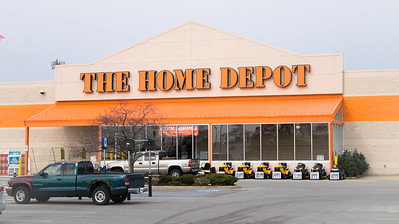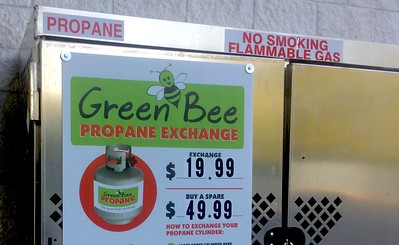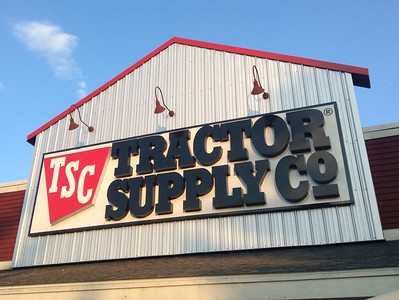
When you run out of propane in your tank, you will need to refill it. You can do this at a local refilling station, and there is one in your area.
See the table below to contact a refilling company in Brooklyn.
Refilling stations are more convenient and cost-effective than buying new containers every time you run out of gas.
If you’re thinking about refilling your propane tank, whether it is for your RV, heater, grill or forklift, it is essential to fill those bottles to put you on the operation.
This article will explain how to refuel your propane tank and answer any questions you might have.
Read on…
Where to Get Your Propane Tank Refilled in Brooklyn
There are a few ways to get your propane tank refilled. You can either go to a local refilling station and have your empty tank refilled or have the filled tank delivered to your location.
If you choose to go to a local refilling station, you’ll need to exchange your empty tank for a full one.
The propane company will then refill your tank.
If you’re looking for a refilling station or company near Brooklyn, here are your options:
| Company | Address | Phone |
| Island Park Propane | 3976 Long Beach Road Island Park, NY 11558 | (516) 431-1111 |
| Costco | 976 3RD Ave, Brooklyn, NY, 11232-2400 | (718) 965-7603 |
| Lowe’s | 5602 Avenue U, Brooklyn, NY 11234 | (718) 758-2910 |
| Liberty Industrial Gases | 600 Smith Street, Brooklyn, NY 11231 | (718) 596-0060 |
| Manhattan Propane | Service Brooklyn and nearby locations | 1-631-492-2048 |
| 73 Gasoline Corp | 7310 New Utrecht Ave, Brooklyn, NY, 11204 | (718) 232-0474 |
| Amg Gas Corp | 3170 Atlantic Ave, Brooklyn, NY, 11208 | (800) 430-3788 |
| Flatlands Gas Corp | 10504 Flatlands Ave, Brooklyn, NY, 11236 | (718) 927-2132 |
| New Sai Gas Corp | 354 Hamilton Ave, Brooklyn, NY, 11231 | (718) 855-5105 |
| T W Smith Corp | 885 Meeker Ave, Brooklyn, NY, 11222S | (718) 388-7417 |
How to Choose the Best Propane Refilling Provider
Selecting the right propane refilling provider is essential for both safety and cost-effectiveness. Given the critical role propane plays in many households and businesses, ensuring a reliable and efficient supply is paramount. Here’s a guide to help you make an informed decision:
1. Research and Reputation
- Online Reviews: Check websites like Yelp, Google Reviews, and the Better Business Bureau for ratings and feedback.
- Word of Mouth: Ask neighbors, friends, or local businesses about their preferred providers and experiences.
- Company History: A long-standing company often indicates reliability and experience in the industry.
2. Safety Record
- Ensure the provider adheres to safety regulations and industry standards.
- Inquire about their safety training and protocols for employees.
- Check if they offer safety information or training for customers.
3. Cost and Pricing Structure
- Compare prices among several providers. Remember that the cheapest isn’t always the best in terms of service or safety.
- Understand their pricing model: Is it fixed, tiered, or market-rate pricing?
- Look out for hidden fees or charges.
4. Services Offered
- Do they just refill, or do they also offer tank inspection and maintenance services?
- Are there delivery options available? If so, is there a fee?
- Do they have an emergency service or after-hours service?
5. Customer Service
- Gauge their responsiveness by calling or emailing their support.
- A provider with good customer service can be invaluable, especially if you encounter any issues or have urgent queries.
- Look for providers that offer support both online and offline.
6. Contract Terms
- If you’re considering entering a contract, read the terms carefully.
- Be wary of long-term contracts unless you’re sure of the provider’s reliability.
- Understand the terms for termination, in case you decide to switch providers.
7. Environmental Stewardship
- If environmental concerns are important to you, choose a provider that has eco-friendly practices or initiatives.
- Some companies might have tank recycling programs or invest in cleaner technologies.
8. Refill Options
- Some providers offer tank exchanges, while others offer on-site refills. Determine which is more convenient and cost-effective for you.
- For businesses or users with large tanks, check if the provider offers bulk refill discounts.
9. Location
- Proximity is crucial, especially if you’re transporting tanks for refill. A nearby provider saves time and transportation costs.
- However, if a slightly farther provider offers better services or pricing, it might be worth the extra distance.
10. Equipment and Technology
- Modern equipment can ensure more accurate and efficient refills.
- Some providers might offer tech solutions, like apps to monitor propane levels or schedule deliveries.
Choosing the best propane refilling provider requires a mix of research, price comparison, and assessing personal needs. Safety should always be a top priority, followed by cost, convenience, and customer service. With diligent consideration, you can find a provider that ensures a smooth and safe propane experience.
Propane Tank Sizes and Refill Options
Propane, often referred to as liquefied petroleum gas (LPG), is a versatile fuel used for a variety of applications, from home heating and cooking to fueling vehicles and outdoor grills. Propane tanks come in various sizes to cater to different needs, and understanding these sizes can help you make informed decisions about your propane usage and refill options.
1. Common Tank Sizes and Their Respective Applications
- 20-pound tank:
- Size: Holds about 4.7 gallons of propane.
- Applications: Widely used for grilling, portable stoves, and space heaters.
- 33-pound tank:
- Size: Holds about 8 gallons of propane.
- Applications: Often used for forklifts.
- 100-pound tank:
- Size: Holds about 24 gallons of propane.
- Applications: Suited for residential heating, cooking, and hot water.
- 500-gallon tank:
- Size: Holds about 400 gallons of propane when filled to 80% capacity.
- Applications: Typically for large homes, used for both space heating and water heating. Can also be used for small commercial applications.
- 1,000-gallon tank:
- Size: Holds about 800 gallons of propane when filled to 80% capacity.
- Applications: Suited for large commercial establishments or farms.
Note: For safety reasons, propane tanks are never filled to 100% capacity. The standard is to fill them up to 80% to allow for gas expansion.
2. Differences Between Exchange and Refill Services
- Exchange Services:
- Process: Simply swap your empty tank for a full one at a designated exchange station.
- Convenience: Quick and easy, with many retail locations offering exchange services.
- Cost: Typically more expensive on a per-gallon basis.
- Tank condition: Risk of receiving an older or more worn-out tank.
- Refill Services:
- Process: Take your tank to a refill station where it will be filled on the spot.
- Convenience: Might be less widespread than exchange locations, and refilling can be slightly more time-consuming.
- Cost: Often cheaper than exchanging as you pay for the exact amount of propane.
- Tank condition: Keep your own tank, beneficial if it’s newer or well-maintained.
When it comes to propane tank sizes and refill options, understanding the various sizes and their applications, as well as the pros and cons of refilling versus exchanging, can help users make informed decisions that align with their needs and priorities.
How Much Does it Cost to Refill a Propane Tank
When it comes to refilling propane tanks in Brooklyn, several factors influence the cost. This section will delve into the average costs of refilling different tank sizes, compare these costs to exchanging tanks, and shed light on any promotions or discounts available in the Brooklyn area.
1. Average Costs of Refilling Different Tank Sizes
- 20 lb tank (Grill size): Most common for barbecue grills, these tanks typically cost between $15 to $25 to refill.
- 30 lb tank: Often used for larger grills or RVs, the refilling cost can range between $25 to $35.
- 40 lb tank: Catering to large grills or home heating purposes, these can be refilled for approximately $35 to $50.
- 100 lb tank: Serving commercial or residential heating needs, the cost to refill can range from $90 to $120.
- 500-gallon and larger tanks: These are primarily for commercial purposes or large homes. Refill costs are usually negotiated with the supplier based on volume and current market prices.
2. Comparison of Costs between Refilling and Exchanging
- Exchanging: This is often more convenient, especially for 20 lb tanks, but can be pricier. Exchanging a 20 lb tank can cost between $20 to $30, but you might get a tank that isn’t completely full.
- Refilling: Refilling usually ensures you get a full tank of propane. The cost per gallon tends to be less than exchanging, making it a more economical choice for regular users.
3. Possible Promotions or Discounts Available in Brooklyn
Brooklyn, with its vibrant community and numerous businesses, often has promotions and discounts that cater to its residents:
- Loyalty Programs: Some refill stations offer loyalty cards where frequent refills can lead to a discounted or free refill.
- Bulk Refills: Commercial businesses or individuals with large tanks can negotiate rates or seek volume discounts.
- Early Bird Specials: Some refill stations offer discounts during specific hours or days.
- Seasonal Promotions: Especially during the summer grilling season or winter heating surge, stations might offer promotional rates.
- Local Events or Festivals: On occasion, local events or festivals may partner with propane providers for special discounts.
While the exact cost of propane refills can vary based on market fluctuations, location, and individual station pricing, it’s often more economical to refill than exchange. Brooklyn residents should be on the lookout for promotions, especially during peak seasons, and consider loyalty programs if they use propane frequently. Always ensure that safety comes first, regardless of where and how you refill your tank.
To Save Some Money, Do These
Refilling, not exchanging, is still a good option to take if you want to save some cash, especially when your tank is still in good working condition and doesn’t need to be recertified yet. In refilling, the cost of propane gas is considerably cheaper than exchange.
In refilling, your tank will be filled to full capacity unlike in exchange where some pounds may be lacking in weight.
If you think you have a faulty gauge, consider replacing it with a new one. If the gauge has a faulty reading, you surely receive an insufficient amount of gas you paid for. A good gauge makes sure you’re getting a good reading while the tank is in use and likewise the tank has the right capacity of gas when refilling.
Big retailers and companies in the industry have some sort of coupons being offered to attract customers. You can visit the store or browse their website for promotions. This will cut some dollars when you visit their store.
Finding a Reputable Company
When you’re looking for a refilling company, it is an instinct to find one that can get the best value for money, and it’s important to find a reputable company that can give the best service.
- Find a refilling station that also accepts the exchange. Refilling a tank is a better choice, at least money-wise, because the cost is much cheaper. However, there are instances when you need to exchange your tank.
- Find a Company that Delivers. This comes with a fee but is convenient.
- A company must also be licensed to sell propane. You can find a reputable company by asking friends and family members where they get their propane refills. Getting recommendations from colleagues is the best answer you could take.
- Find a refilling company that operates 24×7. You will never know when you are going to run out of gas, so it is essential to find a station that has round-the-clock service.
- Sign up for a refill pricing plan, if there is such a scheme offered. This is a great way for regular customers, who order in bulk and in large volume, to save some money.
When Refilling or Ordering, Prepare this Information
• Account number
• Name of the account,
• Purchase order number
• Contact person
• Contact number
• Exact delivery address
• Number of empty tanks to refill
• Restricted delivery times
Refill vs Exchange
| Criteria | Refill | Exchange |
|---|---|---|
| Cost | Typically more cost-effective. Pay for the exact amount of propane. | Flat fee regardless of propane amount. Might be paying for more than you get. |
| Convenience | Can be time-consuming. Availability varies. | Quicker and often available at regular shopping locations. |
| Tank Condition | Retain your original tank. Beneficial if the tank is new/good condition. | Potential to receive an older tank. However, tanks are up to safety standards. |
| Quantity of Propane | Often get a full tank. | Tanks might not be 100% full. |
| Safety Inspections | Quick inspection for visible damage or expiration at refill stations. | Tanks undergo regular inspections and are compliant with safety standards. |
| Environmental Impact | More environmentally friendly due to prolonged use of a single tank. | Eco-friendly but might result in more frequent tank reconditioning or recycling. |
| Initial Investment | Initial purchase of tank required. Subsequent costs only for propane refills. | Offer an initial tank purchase. Subsequent exchanges involve the cost of propane. |
Tips for Efficient Propane Use
Propane, as an efficient and clean-burning fuel, offers numerous benefits for residential and commercial applications. However, maximizing its potential and ensuring safety requires users to adopt some best practices. Here are some tips to ensure efficient propane use, including checking for leaks, maintaining appliances, and optimizing seasonal usage.
1. Checking for Tank Leaks to Prevent Wastage
- Soapy Water Test: One of the simplest ways to detect leaks is by applying a soapy water solution to the connections and valves of the tank. If bubbles form, it’s an indication of a leak.
- Odor: Propane has a distinct smell, similar to rotten eggs or skunk. If you detect this odor, especially near your tank or appliances, it might indicate a leak.
- Regular Inspections: Schedule routine professional inspections of your propane system to identify and address potential issues.
2. Proper Maintenance of Propane Appliances
- Regular Cleaning: Dust, debris, and even spider webs can clog burners and affect performance. Ensure you clean your appliances regularly.
- Keep Ventilation Clear: Ensure that ventilation areas, especially for indoor appliances, are unobstructed. Good ventilation ensures complete combustion and efficient propane use.
- Update Old Equipment: Older appliances might not burn propane as efficiently as newer models. If an appliance is aging or frequently malfunctioning, consider an upgrade.
- Annual Check-ups: Hire a professional to inspect your propane appliances annually. They can calibrate, clean, and ensure everything is in optimal working condition.
3. Seasonal Usage Tips and Storage Best Practices
- Summer Tips:
- Grilling: Ensure the grill lid is open when igniting to prevent gas build-up. Regularly check hoses for cracks or leaks.
- Air Conditioners: If you use propane-powered AC units, ensure they are serviced before peak summer.
- Winter Tips:
- Heating: Before the cold sets in, service your propane-powered heaters. Clean filters and ensure vents are unblocked.
- Water Heaters: Adjust the temperature to around 120°F to save energy. Insulate older units to prevent heat loss.
- Storage Best Practices:
- Location: Store propane tanks outdoors in a well-ventilated area, away from direct sunlight and flammable materials.
- Position: Ensure tanks, especially portable ones, are stored upright.
- Protection: Use a protective cover for your propane tanks, especially in adverse weather conditions.
- Temperature: Propane functions best in moderate temperatures. Avoid extreme cold or hot storage environments.
- Empty Tanks: If you have tanks that are no longer in use or are empty, consider recycling or properly disposing of them. Storing old tanks can pose safety risks.
To Make a Conclusion
When you run out of propane in your tank, you will need to refill it. You can do this at a local refilling station, see above for the list of companies.
Refilling is more convenient and cost-effective than buying new containers every time you run out of gas. If you’re thinking about refilling your propane tank in Brooklyn, NY, there are a number of companies in this location, it is just a phone call away.
We hope this article had explained how to refuel your propane tank and answer any questions you might have.

Mike is an experienced propane technician with over 15 years of professional experience in the field. He has dedicated his career to helping customers with their propane needs, from installation to maintenance and repair. Together with Jeremy, he co-founded this website to provide useful information and guidance to customers seeking reliable propane services.



